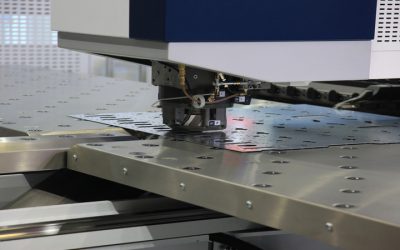In the world of machining, precision is paramount. Every cut, shave, or trim has to be exact, and often, the process doesn’t end when the machine stops. Burrs—those tiny, often sharp protrusions on metal parts—can affect the functionality and safety of a machined component. This is where metal deburring tools come into play, ensuring that the final product is smooth and precise.
Understanding the Importance of Deburring
Deburring is not just about aesthetics; it’s a crucial finishing process that removes burrs, enhancing the performance and safety of metal parts. Burrs can lead to part malfunction, assembly issues, and even injuries to handlers, making deburring tools essential in any machining setup.
Types of Metal Deburring Tools
The choice of deburring tools can vary based on the material, the complexity of the part, and the nature of the burr. Here are some of the most commonly used tools in the industry:
1. Deburring Blades
- Hand Deburring Cutters: These are simple tools fitted with replaceable blades, ideal for manual deburring of small and accessible areas.
- Scrapers: Used for heavier burrs, scrapers are more robust and can handle tougher materials.
2. Rotary Deburring Tools
- Rotary Files: These are attached to drills or rotary tools and are excellent for deburring holes or complex geometries.
- Brushes and Flap Wheels: Used in drill presses or die grinders, these tools are perfect for soft burrs and can be used on non-metallic materials as well.
3. Abrasive Deburring Tools
- Abrasive Belts and Discs: These are used with belt sanders or angle grinders to smooth out larger surfaces.
- Hand Pads and Sponges: Ideal for light burrs and finishing touches.
4. Automated Deburring
- Tumbling Machines: These are filled with abrasive media and parts are loaded into them for batch deburring.
- Robotic Deburring: Advanced manufacturing setups use robotic arms equipped with deburring tools for high precision and consistency.
Choosing the Right Tool
Selecting the right deburring tool involves understanding the material hardness, the part’s geometry, and the type of burr. For instance, softer metals like aluminum might only need a light abrasive pad, whereas harder metals like steel could require a robust rotary file. The size and accessibility of the part also dictate whether manual tools or automated solutions are more appropriate.
Conclusion
Deburring is an essential step in the machining process, crucial for ensuring the functionality, safety, and quality of metal parts. From simple hand tools to sophisticated robotic systems, the range of metal deburring tools available is vast. By selecting the appropriate tool and method, machinists can enhance their product’s finish, meet stringent quality standards, and ensure the longevity and reliability of their components. Remember, the right deburring tool not only contributes to the aesthetic appeal of a machined part but also its practical application and safety in use.

